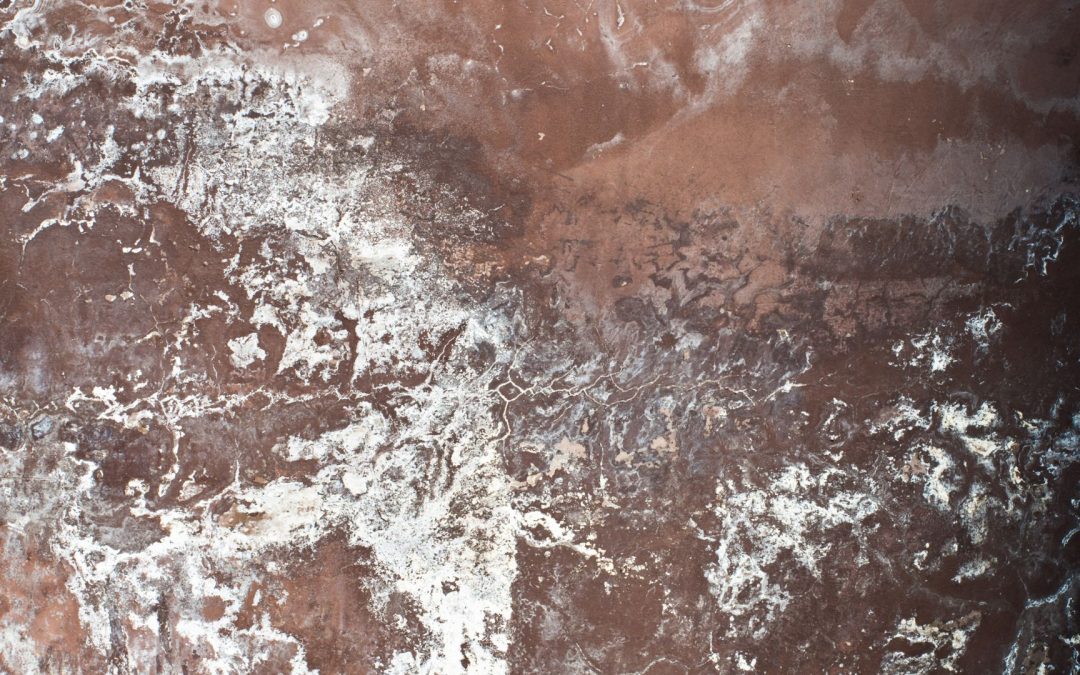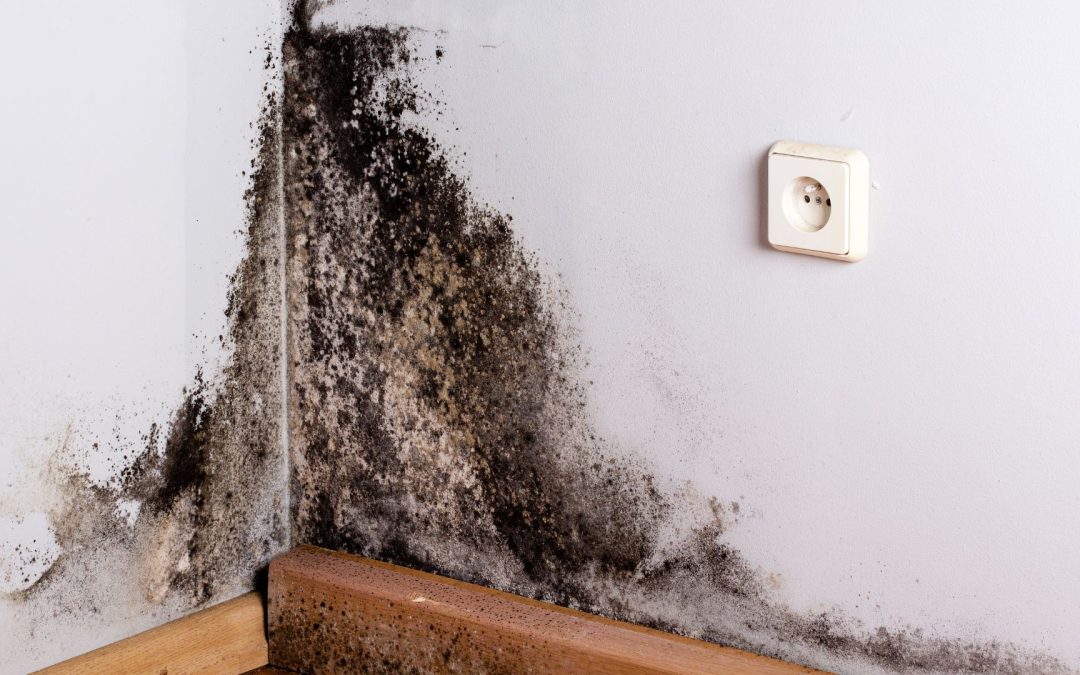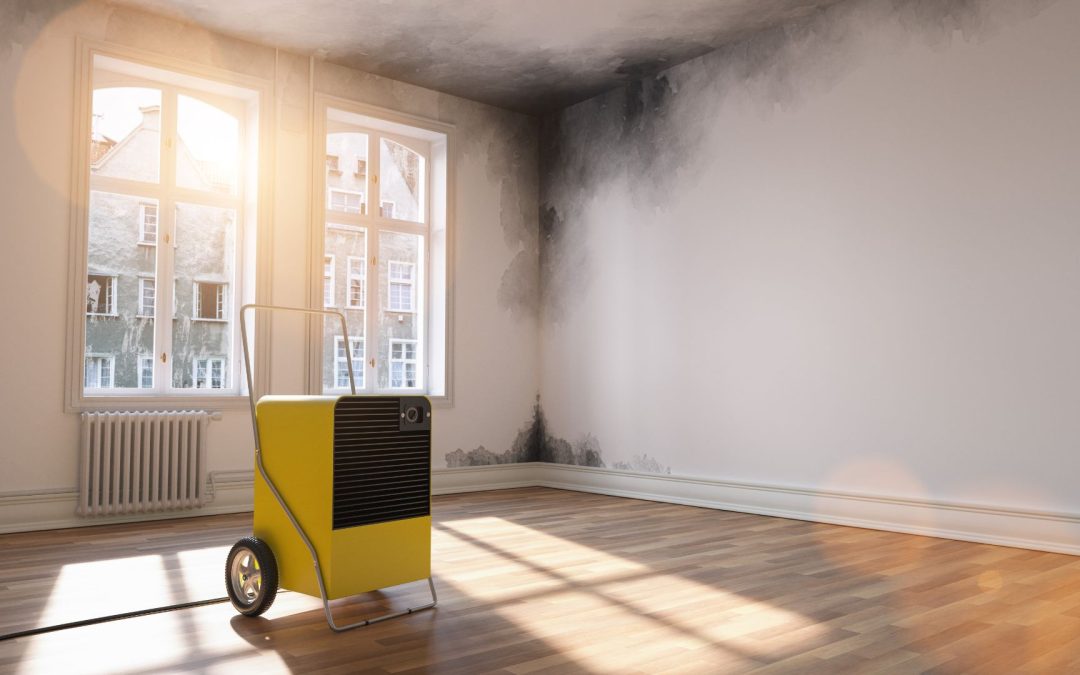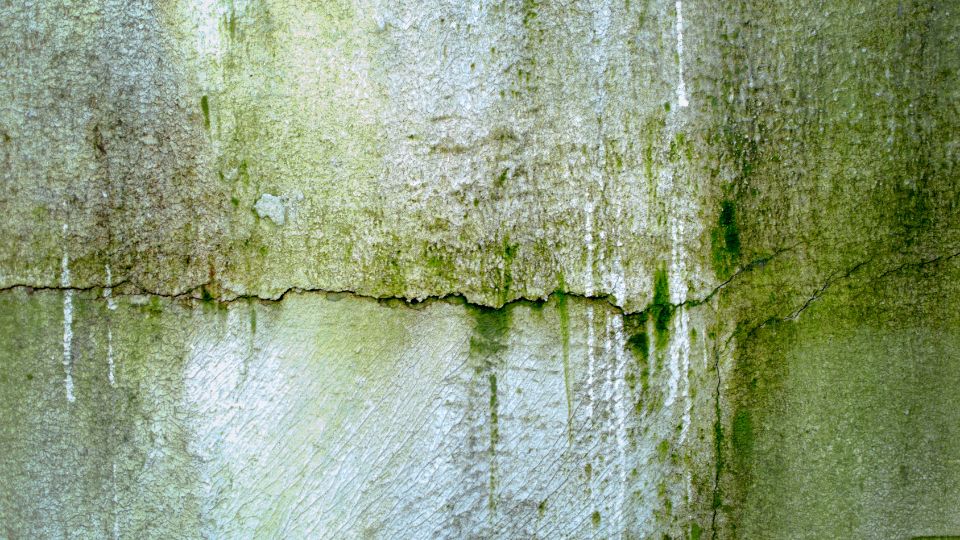
by Mold-B-Gone | Nov 8, 2022 | Uncategorized, White Mold
Mold comes in many shapes and colors, but did you know that there is a type of mold that is white? White mold, also known as Aspergillus, is a type of fungus that can cause respiratory problems. Organisms such as mold and fungus can wreak havoc in your home if left unchecked.
People often confuse white mold with mildew, which is also a type of fungus. Although white mold and mildew may look alike, they affect the body differently. Mildew is more common in wet climates, while white mold prefers warmer temperatures and high humidity levels.
Read more: Mold vs. Fungus: Their Similarities and Differences
Here, we will discuss what white mold is, its health effects, and how you can safely remove it from your home.
What Is White Mold?
White mold is a fungus that can grow in areas with excessive moisture and humidity. White mold looks like a white, fuzzy material and often appears on organic materials such as wood, paper, insulation, drywall, wallpaper, or other cellulose-based materials. It may also appear in damp corners of rooms or around windows and doors.
What Are the Common Causes of White Mold?
White mold is a type of fungus which thrives in damp and humid environments. Common causes of white mold can include:
a) Leaky pipes, windows, or roofs:
When there is a leak in the home, it can allow moisture to accumulate in areas that may not usually be damp. This provides an ideal environment for white mold to thrive.
b) Insufficient ventilation:
Poor air circulation and ventilation can cause excess humidity and moisture in the home. This will create an environment that is favorable for white mold to grow.
c) Flooding:
When flooding occurs, it can create a perfect environment for white mold growth.
d) Improperly maintained HVAC systems:
If the insulation and filters of an HVAC system are not regularly checked and changed, they can become saturated with moisture, creating a perfect environment for white mold.
How To Identify White Mold?
White mold is identified by its color, usually white or grayish. It can also have a powdery or fuzzy texture. Other signs of white mold include unpleasant musty odors, water spots on walls and ceilings, discolored patches on walls and floors, and black spots on wood surfaces. Efflorescence, a white powdery substance found on basement walls, indicates white mold growth.
How Does White Mold Affect Your Health?
White mold can cause various health problems, from mild symptoms like hay fever and sneezing to more severe issues such as respiratory infections and skin problems. When exposed to the spores of white mold, some people may experience allergic reactions, including runny noses, watery eyes, coughing, wheezing, and difficulty breathing. Those with respiratory conditions, such as asthma, may be particularly vulnerable to the effects of white mold.
Long-term exposure can also lead to breathing problems and other illnesses. It is essential to take action as soon as you notice any signs of white mold in your home or office to prevent potential health risks.
White fluffy mold is dangerous and should be taken seriously. For expert mold removal in Atlanta, contact Mold-B-Gone Remediation Services. We have the experience and knowledge to resolve your mold concerns effectively.

by Mold-B-Gone | Oct 19, 2022 | Basement Mold, Mold and Infants, Mold Inspection
Mold can be a severe issue. It can cause health problems and damage to your property.
Basements are the perfect breeding ground for mold. The combination of darkness, moisture, and lack of ventilation creates the perfect environment for mold to grow.
Mold produces allergens that can cause respiratory problems, skin irritation, and other health issues. In some cases, mold can even produce toxins that can harm your health.
Hence, it is essential to call mold remediation for your basement as soon as you see any signs of mold.
Read more: Health Benefits of Mold Remediation
Experts will take care of the problem quickly and efficiently to ensure your home’s safety and integrity.
We will explain what causes mold, its health risks, and how our mold remediation services can help you get rid of it for good.
What Are the Causes of Mold Growth in Basements?
1) Poor ventilation – Moisture-laden air can condense on cold surfaces, leading to mold growth.
2) Water leaks – Leaks from pipes, foundation cracks, or other sources can introduce moisture into the basement, promoting mold growth.
3) Flooding – Basements are susceptible to flooding, leading to mold problems.
What Are the Health Effects of Mold?
1) Mold can cause nasal stuffiness, throat irritation, coughing, or wheezing.
2) People with asthma or who are allergic to mold may have more intense reactions.
3) Mold exposure can lead to inflammation of the airways and lungs.
4) Mold exposure is linked to neurological conditions and illnesses, including memory loss and depression.
How To Identify the Different Types of Mold?
1) Black Mold
These fungi are commonly found in bathrooms, kitchens, and basements. They thrive in places with high humidity or water leaks. They are also mildew and can cause many respiratory problems if inhaled.
2) White Mold
This type of mold is often found in food like bread, cheese, and fruits. It can cause nausea, vomiting, and diarrhea if ingested.
3) Toxic Mold
This is the most dangerous type of mold as it can release mycotoxins into the air, which can be inhaled and cause serious health problems.
How Do Experts Help With Mold Removal from Basements?
1. Identify the Location and Extent of Mold Growth
This will help determine the best way to remove the mold.
2. Contain the Mold
Containing will prevent it from spreading to other areas of your home. This can be done by establishing a physical barrier, such as using negative pressure to keep mold spores from traveling through the air or using natural barriers like plants.
3. Eliminate the Source of Moisture
Mold needs water to grow, so eliminating the source of moisture is essential to preventing it from returning. This can be done by fixing leaks, increasing ventilation, or using a dehumidifier.
4. Remove the Mold
Once the mold has been contained and the source of moisture eliminated, the mold can be removed. This can be done through cleaning, sanding, and HEPA vacuuming.
5. Clean the Affected Area
After removing the mold, the area should be cleaned with soap and water. Any porous materials that have been affected by mold should be thrown away.
If you are searching for a mold specialist in Atlanta, contact Mold B Gone. We will come to your home and inspect for mold. Our process is simple: we find the mold, we kill the mold, and we remove the mold. We also offer a warranty on all of our work.

by Mold-B-Gone | Oct 12, 2022 | Black Mold
Mold is found in many households in the U.S., and while it can be unsightly, it’s usually not a cause for alarm. It is a fungus commonly found in damp areas and can cause serious health problems if left unchecked. The primary difference between mold and fungus is that mold is green or black, while fungus can be any color.
Also, a fungus is composed of microscopic spores, while a mold is composed of filaments. The fungus typically grows on food or soil, while mold usually grows on damp surfaces.
Read more: Mold vs. Fungus: Their Similarities and Differences
Black mold can be black, green, or brown. It’s often found in damp areas, such as bathrooms, kitchens, and basements. If left unchecked, black mold can cause serious health problems.
Read on to learn about black mold and its dangers.
What Is Black Mold?
Black mold, known as Stachybotrys chartarum, is a mold that thrives in damp, dark environments. It’s often found in homes and buildings damaged by water or flooding. Black mold can cause serious health problems, including respiratory illness, neurological damage, and even death.
Signs of a Black Mold Infestation in Your Home
1) Visible Mold Growth
You can find black mold anywhere in your home where there is moisture, such as in damp basements, showers, or leaky pipes. The mold may appear as black specks, streaks, or blotches and can quickly spread if not removed.
2) Musty Odors
Black mold emits a gas called mycotoxin, which smells musty. If you notice this musty smell, it’s essential to investigate further to see if mold is present.
3) Respiratory Problems
When inhaled, black mold can cause several respiratory problems, including:
- Asthma
- Allergies
- Bronchitis
- Inflammation of the lungs
- In severe cases, black mold inhalation can even lead to death.
How To Prevent or Get Rid of Black Mold: Tips
1) Ventilation
Adequate ventilation is key to preventing the growth of mold. Be sure to ventilate any areas in your home prone to moisture, such as the kitchen and bathroom. Use exhaust fans or open windows to help circulate air and keep these areas dry.
2) Humidity
Mold thrives in humid environments, so it’s essential to keep the humidity level in your home low. Use a dehumidifier to help remove excess moisture from the air.
3) Water Damage
One of the most common ways mold enters the home is through water damage. If your home has experienced flooding or a leak, dry the area thoroughly and repair any damage to prevent mold from growing.
4) Cleaning
A good cleaning routine is essential for preventing the growth of mold. Be sure to clean any areas of your home prone to moisture, such as the kitchen and bathroom. Use a mild detergent and water to clean these areas
5) Mold-resistant products
Many products, like paints, caulk, sealants, etc., have mold-resistant features. You can use these products in areas more prone to moisture and susceptible to black mold growth.
While black mold may not be as toxic as other types of mold, it can still pose serious health risks. Exposure to black mold can cause several respiratory problems, including coughing, wheezing, and difficulty breathing.
You may wonder if cleaning or removing black mold is safe. It is better to call experts for mold removal in Atlanta, like Mold B Gone. We use the best EPA-registered products, and our approach is always efficient and effective.

by Mold-B-Gone | Oct 4, 2022 | Mold and Infants, Mold Inspection
23-year-old Juliana, from New South Wales, Australia, had to be evicted from her home after authorities condemned it. The cause? A rampant mold infestation caused by a year of damp, wet weather.
“It’s really disgusting,” she told to NCA NewsWire. “It started out just in the corners of our bedrooms and living area, but at this point it’s taken over most of the walls and roofing spaces. Even after multiple attempts to remove it, it keeps growing back thicker and in new spots.”
Juliana and her two roommates were all affected. The mold spread to their personal belongings and may be the cause of a mysterious illness.
“Both of my roommates have been sick for the past six months with no explanation – a constant cough and runny nose,” Juliana said. “We’re pretty certain this is from the mold growing in their bedrooms.”
Even though they tried to deal with it themselves, the constant rain and damp weather created the perfect conditions for the mold to re-emerge. Their landlord stepped in to try and deal with the problem, but it was to no avail.
Ultimately, the three housemates had to leave the home because it was condemned.
She’s not the only one that has been dealing with mold. People living in places like Georgia, with humid climates and damp winters, are at increased risk of mold in their homes.
What Are The Signs of Mold In My Home?
Mold development can be concealed. Mold may develop behind walls or above ceiling tiles. Therefore, inspecting for mold in any wet area is critical, especially if water damage has occurred.
Begin by performing a visual survey of your home. Look for stains or discoloration on floors, walls, window panes, ceiling tiles, textiles, and carpets that indicate mold or excessive moisture. Examine the area for evident leaks, dampness, floods, or a musty stench. If you detect anything strange, take immediate action!
How Can I Remove Mold From My Home?
Do not attempt to remove mold yourself. Although mold seems simple to kill, it is not simple to eliminate. One mold spore can spawn a huge infestation quickly. Many landlords and homeowners are tempted to remove mold by themselves to save on costs. However, the risk is much greater than the initial cost of mold remediation and is seldom done correctly. If the mold gets out of control, you might need to have your home demolished like Juliana’s home was.
We recommend hiring the most trusted professional in your area. If you’re in or around Atlanta, Mold-B-Gone is an excellent choice.
Mold-B-Gone: Atlanta’s Mold Remediation Experts
Our highly skilled team of certified mold removal experts specializes in whole-house cleaning. We have done mold removal services for thousands of homes and companies in Atlanta over the years and never failed a test on any house or commercial structure. Since we opened our doors, we have had a 100% rating for our mold cleaning service in Atlanta. Give us a call at (470) 545-4467 today!

by Mold-B-Gone | Sep 20, 2022 | Green Mold, Mold Facts
Mold is a fungus that can grow almost anywhere there is moisture and organic material. In some cases, it can be dangerous to your health. According to EPA, mold can cause a variety of respiratory problems, as well as skin irritation. Taking action immediately is essential if you think you have mold in a home.
The first step is to identify the type of mold you’re dealing with. Many of us do not know the difference between mold and fungus. Mold is a fungus that can grow on wet surfaces. It’s often green, black, or white. On the other hand, the fungus is a plant-like organism that feeds on organic matter.
Read more: Mold vs. Fungus: Their Similarities and Differences.
One of the dangerous forms of mold is green in color. Green mold is also known by its scientific name, Stachybotrys chartarum. This mold is often found in damp or water-damaged areas, such as basements, crawl spaces, and attics. Read on to understand green mold, its dangers, and how to get rid of it.
What Is a Green Mold?
Green mold is fungi that can grow indoors and outdoors. It thrives in moist, warm environments and can often be found in basements, bathrooms, kitchens, laundry rooms, and on or around building materials that have been water damaged. Green mold can also be found in food that has gone bad.
While green mold is not necessarily more dangerous than other types of mold, it can cause health problems for people with allergies or respiratory conditions. Green mold can also cause damage to the material it is growing on.
For example, wooden beams or drywall covered in the green mold may need to be replaced.
If you think you have green mold in your home or business, it is essential to have it removed by a professional as soon as possible.
Tips and Tricks By Professionals to Remove Green Mold
1. Identify the Source of Green Mold
It is probably the most critical step as you need to know where the mold is coming from to remove it properly. Some familiar places for mold growth are leaky pipes, windows, or roofs; condensation on cooling coils of air conditioners; and damp basements or crawlspaces. You should also check for any water damage, as this can be a breeding ground for mold spores.
2. Isolate Affected Areas
After identifying and locating the source of green mold, isolate all affected areas so that the spores do not spread. You can do it by sealing off the rooms with plastic sheeting and using a HEPA filter. Experts wear proper protective gear such as gloves, goggles, and respirators while handling moldy materials.
3. Ventilate Your Home
Open your windows and allow fresh air to circulate throughout your home to help dry out any affected areas. The more quickly you can dry out these areas, the less likely new mold will grow.
4. Use a Commercial Mold Removal Product or Solution
These contain chemicals that can kill mold and mildew.
5. Remove All Material That May Have Been Affected by Mold
Any material in your home that has been affected by green mold (e.g., drywall, insulation, carpeting) needs to be removed and replaced. This is because cleaning and disinfecting these materials will be challenging, and they may continue to harbor mold spores even after you’ve removed the visible mold growth.
Contact Mold-B-Gone for the mold removal company in Atlanta. We are experts in mold remediation and will get rid of your green mold problem quickly and efficiently.





